Displaying Your
Treasures
by Bob Brooke
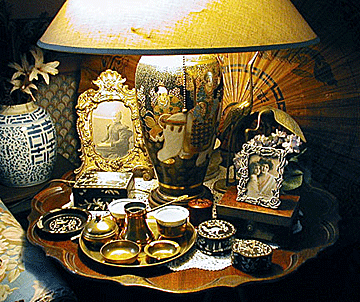 Collecting
antiques and collectibles is one thing, displaying them is quite
another. Some items lend themselves to small tabletop or wall displays
while others, like furniture, for instance, are so large that they
require an entire house. How much space you have for display will
ultimately dictate what sort of antiques, and how many of them, you can
acquire that will fit into the space you have. Collecting
antiques and collectibles is one thing, displaying them is quite
another. Some items lend themselves to small tabletop or wall displays
while others, like furniture, for instance, are so large that they
require an entire house. How much space you have for display will
ultimately dictate what sort of antiques, and how many of them, you can
acquire that will fit into the space you have.
It goes without saying that if you live in a small apartment or even a
condominium, you won’t have the space to display too many large items.
You probably wouldn’t be collecting grandfather clocks, for example, or
even clocks in general because all those chimes going off will
eventually drive you insane.
So before you begin collecting, or even if you’ve started, take stock of
the space you have available. Purchasing antiques and then packing them
in boxes to store away doesn’t enable you to enjoy the objects in your
collections. And isn’t that why you bought them?
To begin, look for underused spaces, such as the landing of a staircase,
the top of a wardrobe or bookcase—even the interior of a defunct
fireplace, or underneath a side table. All can provide an excellent
display space for a grouping of collectibles.
Work antiques and collectibles into your home’s decor. Furnish entire
rooms with your treasures. Think of your home as your own personal
museum.
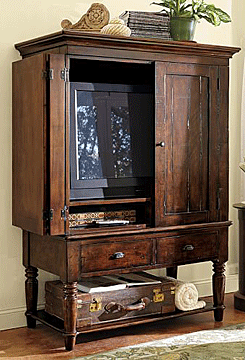 Furniture Furniture
Antique furniture is probably the largest type of item you’ll collect.
Because of its varied sizes, pieces of furniture can’t just be on
display. Most need to be used for the same or a similar purpose as
originally designed. But some, like an old hoosier or armoire, can be
used as a media center.
Group your antique furniture by style or color. Try not to mix dark and
light-toned pieces together in the same room. Obviously, it would be
hard to group pieces by type.
Can you imagine a roomful of chairs? The same goes for clocks. You
wouldn’t place all your clocks in the same room but would spread them
out in all the rooms of your house.
Miscellaneous Objects
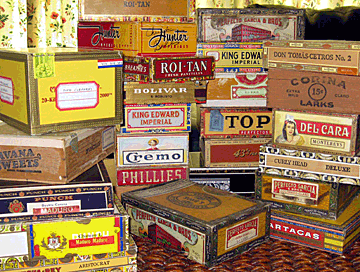 You
can display sturdier accessories, such as antique books, boxes, old
games, toys, and such that can withstand the occasional bump or tumble
out in more visible areas, but avoid placing them in high-traffic spots. You
can display sturdier accessories, such as antique books, boxes, old
games, toys, and such that can withstand the occasional bump or tumble
out in more visible areas, but avoid placing them in high-traffic spots.
For example, antique toys and antique clothing may not have a direct
connection with one another, but if the toys and clothes are from the
same era, you can paint a picture of life from that era. That picture
can be further enhanced by including other antiques of the same era in
your display, including dishes, jewelry, tools, or figurines.
A high shelf can work well enough for moderately fragile items that you
want to keep away from kids and pets, especially if these shelves are
kept in an area that sees very little foot traffic.
Ceramics and Glassware
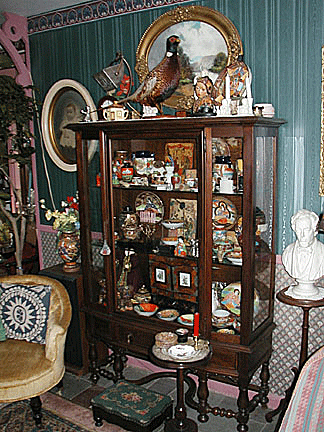 Unlike
many other antiques, ceramics and glassware break. For this reason,
you’ve got to display and protect them at the same time. Curio and china
cabinets are the ideal display vehicle. The hoosier mentioned above also
provides a good display space for kitchen dishes and utensil
collections. Unlike
many other antiques, ceramics and glassware break. For this reason,
you’ve got to display and protect them at the same time. Curio and china
cabinets are the ideal display vehicle. The hoosier mentioned above also
provides a good display space for kitchen dishes and utensil
collections.
With a little creativity, you can convert a small closet into a built in
display area by using an old wooden storm door with glass windows
replacing the closet door. Use a string of 100 small white holiday
lights inside to illuminate your collection.
You can also look for old display cases that can be repurposed to hold a
collection of breakable items or build a custom rack to hold dishes.
Search for sets of old stairs or shelves at an architectural salvage
shop. And keep your eye out on items put out for the trashman in your
neighborhood. You never know what you’ll find.
Small Items
When displaying small items, it’s a good idea to group like ones
together. Eclectic objects can be arranged together if you coordinate
their shape and color. If you have multiple antique collections,
consider arranging them in separate areas based on their nature and
original use. The items in any one area don’t need to be the same, but
they should be related.
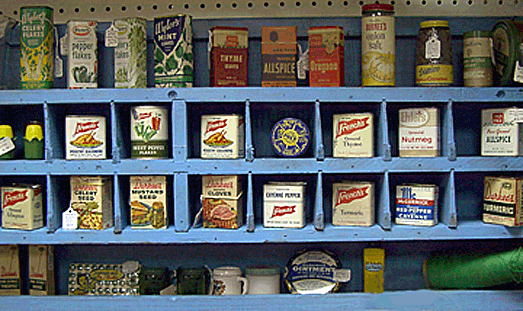
Consider a curiosity cabinet with cubbyholes for small items. Keep your
eye peeled for unusual old cabinets and shelves that can be used to
display these items. Make note of displays in antiques malls and coops.
A little creativity can go a long way.
Pile up tins or boxes. Or assemble a display of small objects on a tray
and place it on a coffee table for an interactive conversation starter.
Ephemera
Frame ephemera with personal meaning, such as old maps, airline ticket
folders, letters, and such. More than any other collectibles, paper
items need to be protected. You might also consider displaying your
paper items in plastic sleeves in a loose-leaf binder so that you and
your guests can browse your collection without touching the items. This
is a great way to share a postcard collection.

Cleaning and Protecting Your Treasures
Display your collections so that others can appreciate them as much as
you do, but protect them, too. Keep fragile items safe. Antiques that
can easily be damaged when knocked or handled should be kept in a
protected area, but there are still ways to protect these collections
while also keeping them on display. Curio cabinets and similar glass
display cases are probably the safest and most traditional option.
You’ll need to periodically clean the items in your collection. Make
sure that you clean each item in a way that will minimize the risk of
damaging it. Hard surfaces can be cleaned with a dust rag. Soft
surfaces, like quilts and other fabrics, can be cleaned with a
low-powered vacuum. Display intricate or delicate items in under or
behind glass so that you don’t have to clean them as often.
Try not to display any antique in a manner that stresses the material of
which it’s made.
If you notice some wear and tear on an item you've had on display for a
while, change the display or put the item in storage.
Keep items away from direct sunlight. Many antiques can fade or dry out
when placed in direct sunlight for extended periods. Ideally, you should
display your antiques in an area with relatively low amounts of light.
This is especially important when dealing with fabrics that have been
dyed, as well as paintings and prints.
To read
more of my articles, please
visit
my Web site.
<
Back to Caring for Your Collections
Archives
Next
Article >
|
